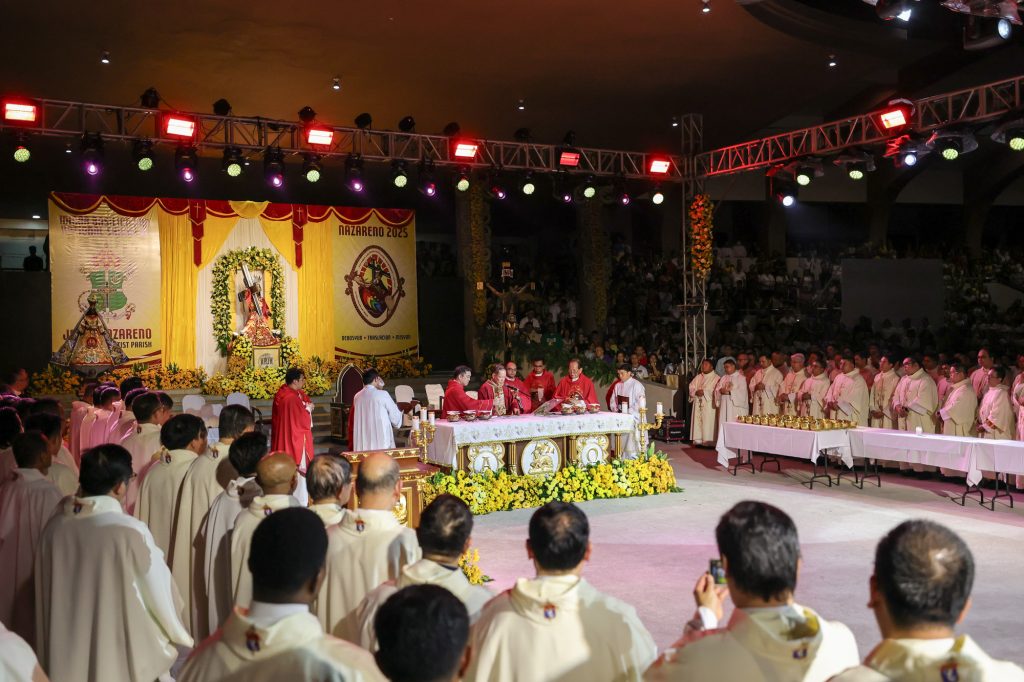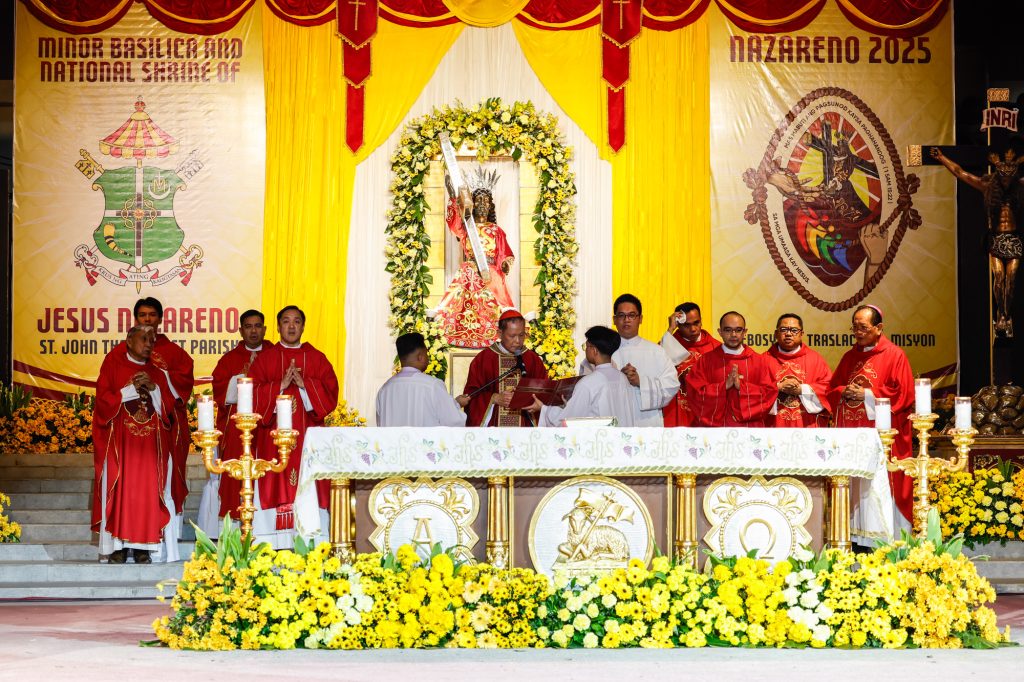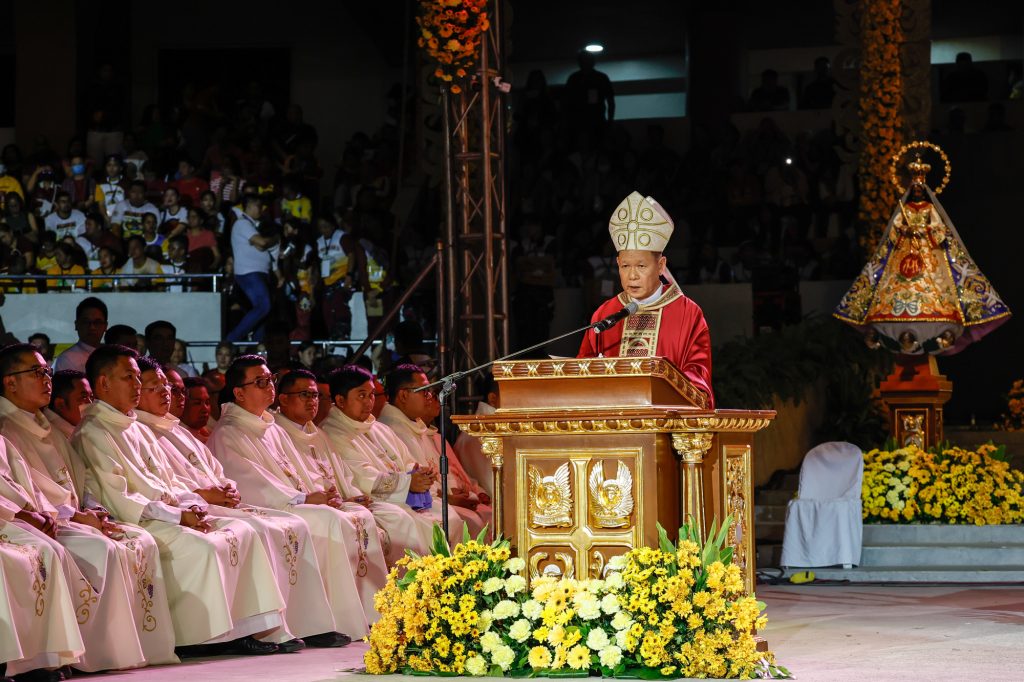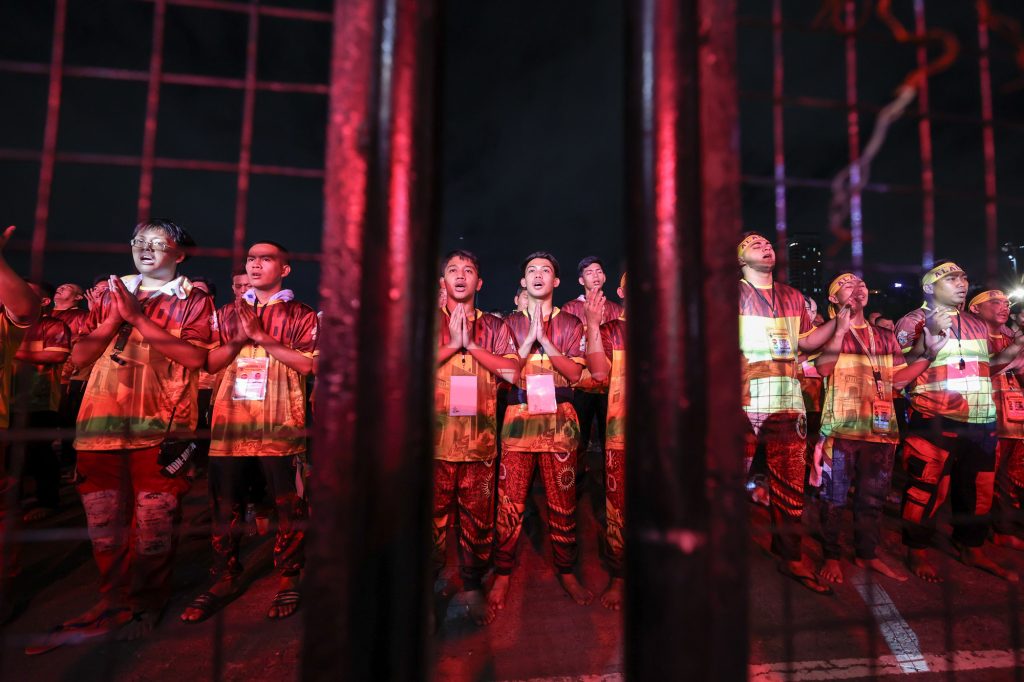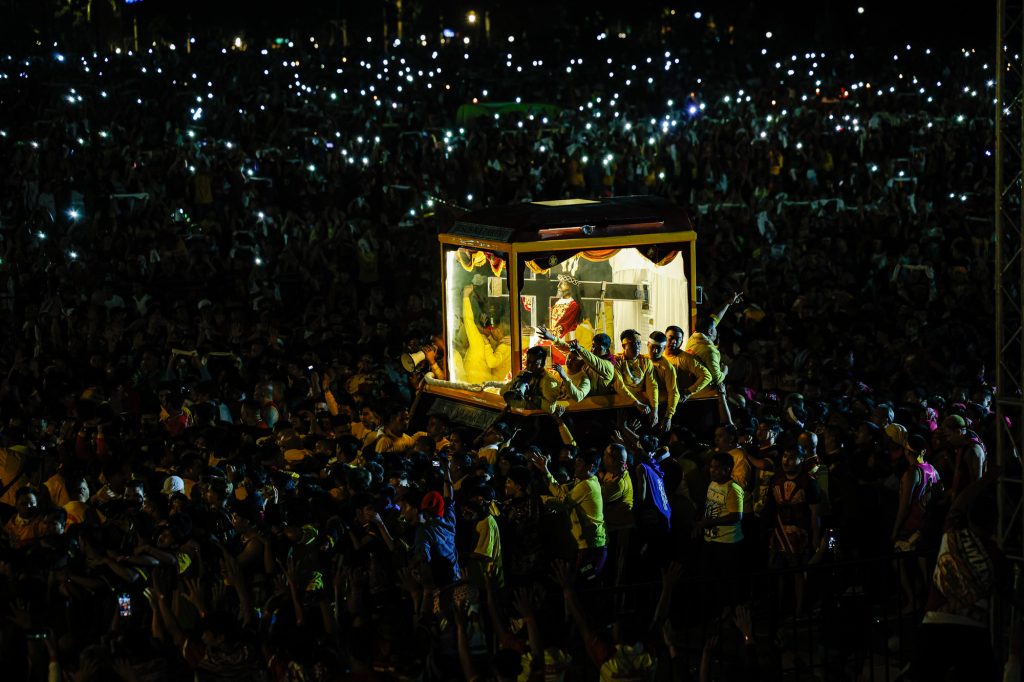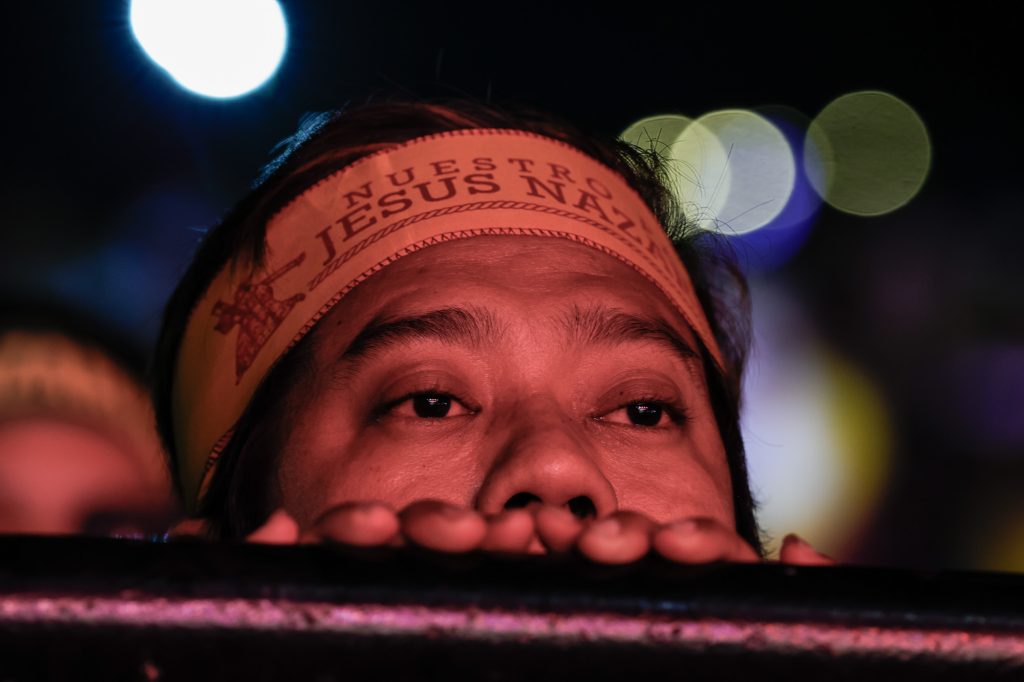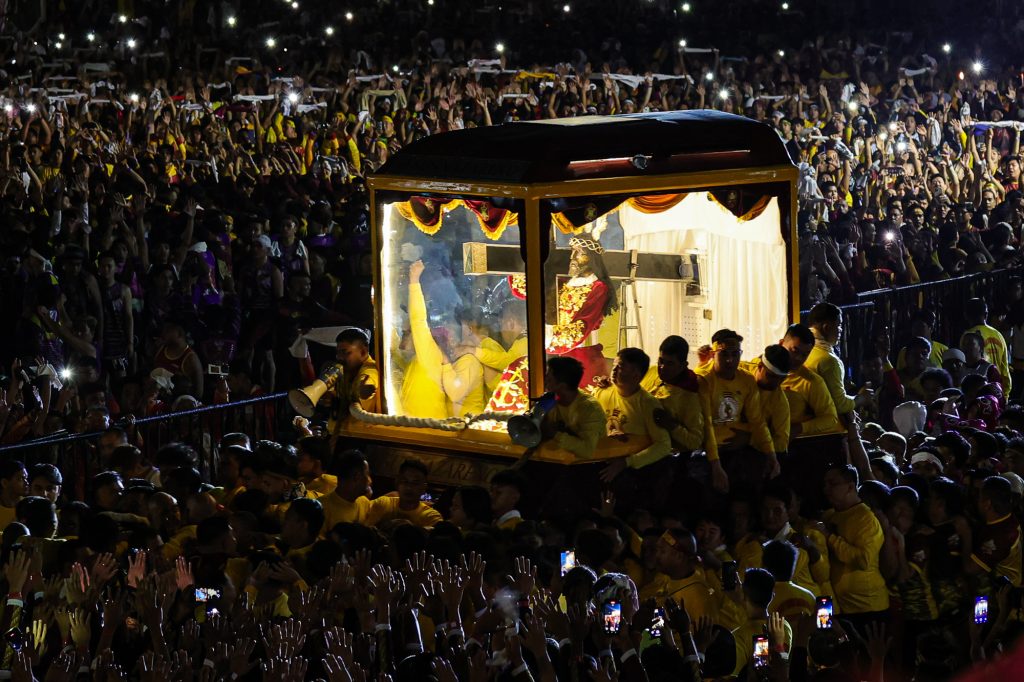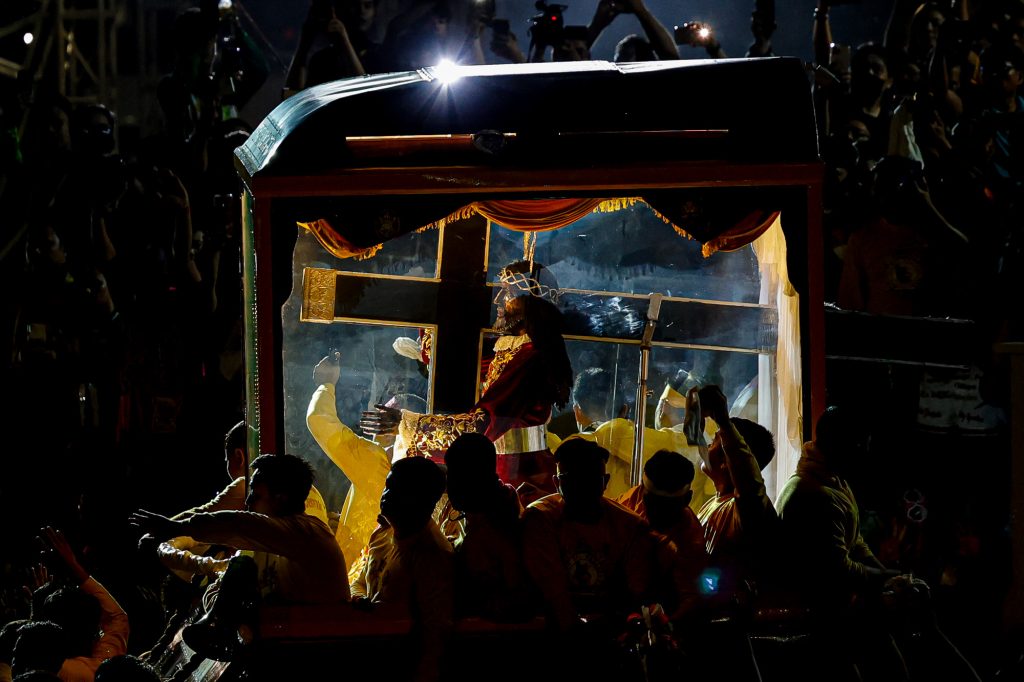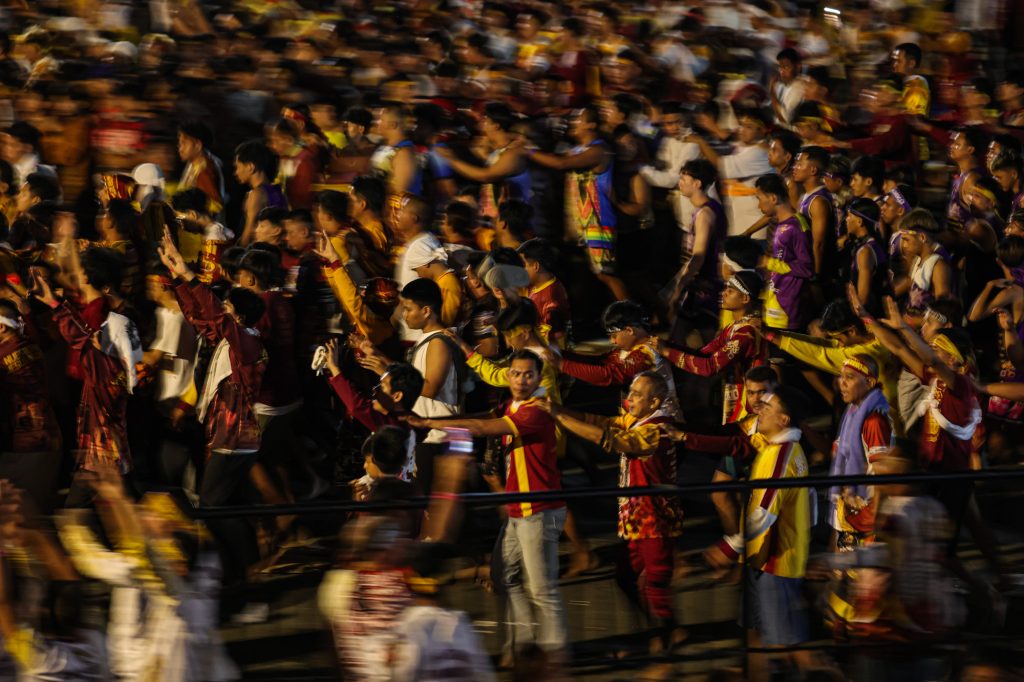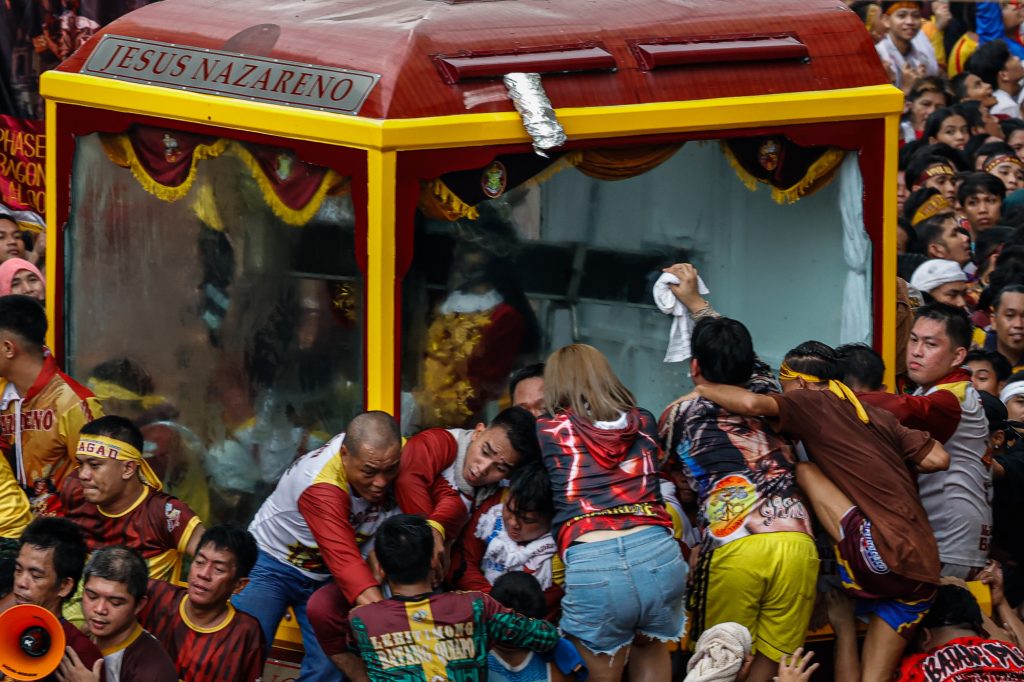The traslacion of the Jesus Nazarene, held annually in Manila, remains one of the most significant religious events in the Philippines, drawing millions of Catholic devotees from across the nation.
This year, the procession began with the traditional Pahalik (kiss) ritual at the Quirino Grandstand on Jan. 7, where faithful pilgrims venerated the iconic Black Nazarene, a life-sized, dark-skinned image of Jesus Christ carrying a cross.
On January 9, the grand procession reenacted the 1787 transfer of the Black Nazarene image to Quiapo Church. Amid fervent prayers, hymns, and chants of “Viva Señor Nazareno!,” barefoot devotees dressed in maroon braved the massive crowd, seeking blessings, healing, and miracles.
The annual traslacion, a reenactment of the historic transfer from a chapel in old Manila to Quiapo Church, attracts Filipino Catholics from all walks of life, particularly those from the working class, peasant communities, and marginalized sectors of society.
The event highlighted the deep cultural and spiritual connection of the Filipino people to their faith.
President Ferdinand Marcos described the annual celebration as a “testament to our people’s solidarity and camaraderie,” adding that it reflects “the immense power and compassion of God who walks with us and hears our prayers, especially in our time of need.”
To ensure safety, around 14,500 security personnel were deployed along the six-kilometer procession route.
Authorities also implemented precautionary measures, including a temporary mobile phone signal shutdown to prevent any potential threats.
Emergency response teams were stationed along the path, with the Philippine Red Cross (PRC) reporting over 300 cases of minor injuries and illnesses, and 14 devotees requiring hospital care.
All photos by Jire Carreon

